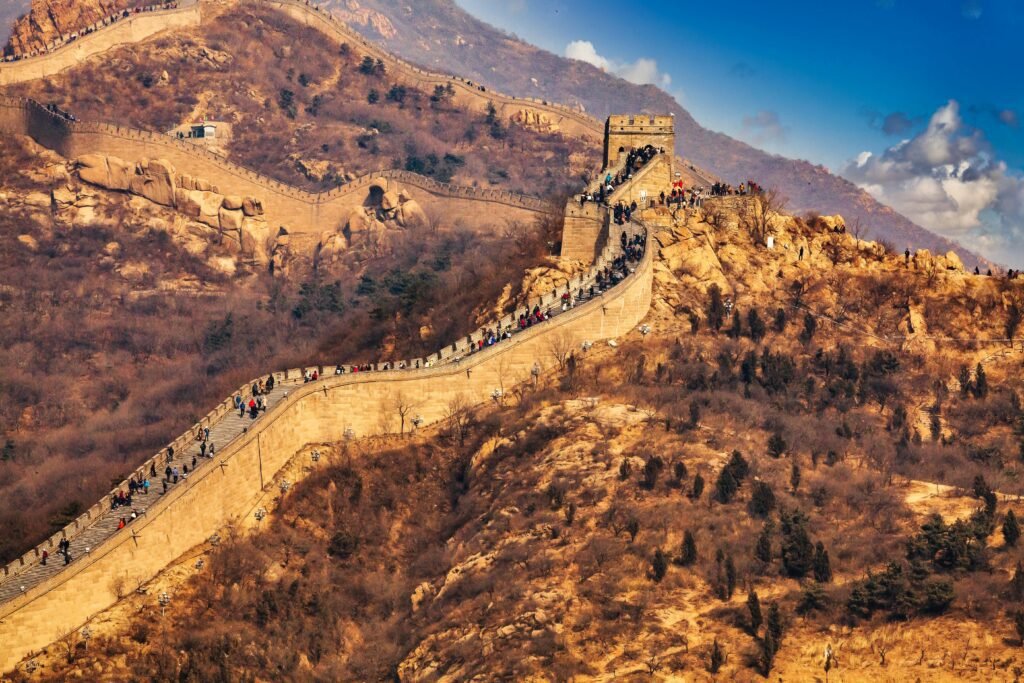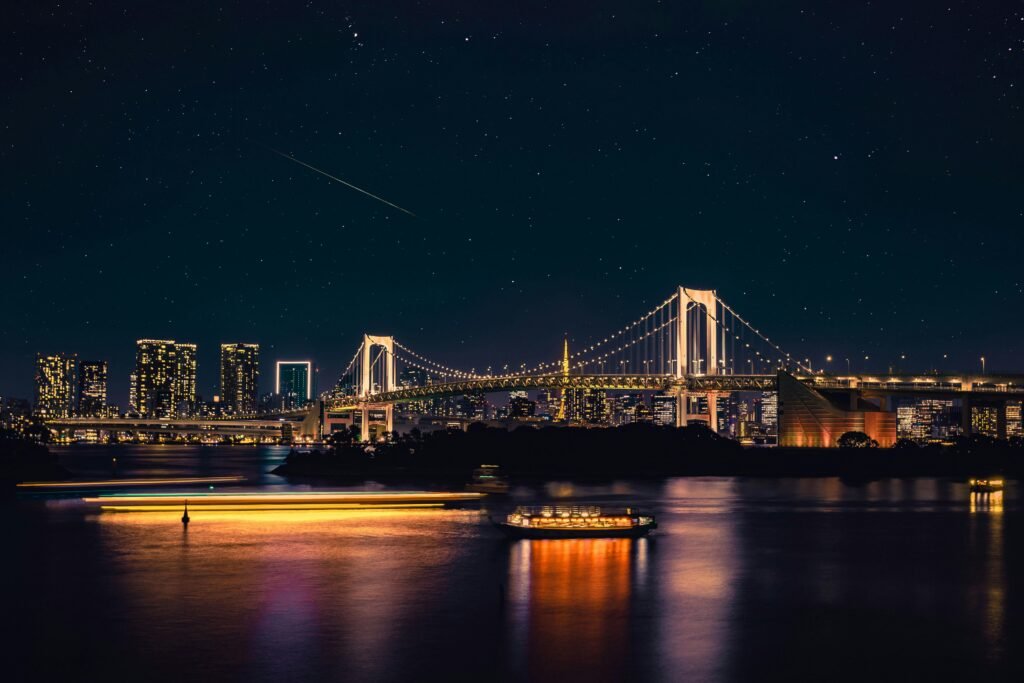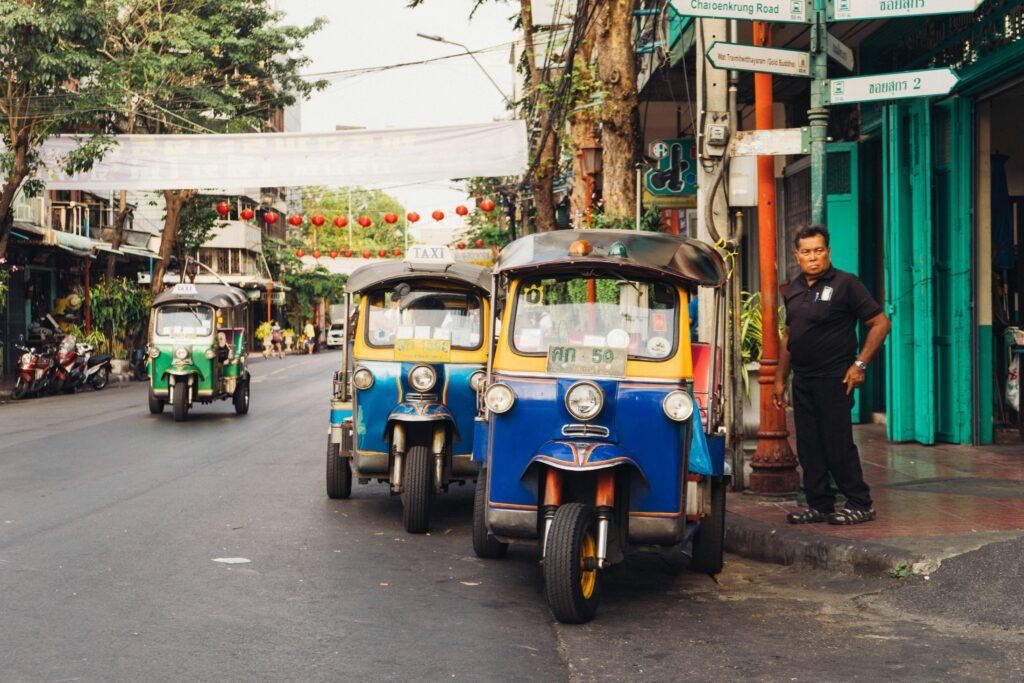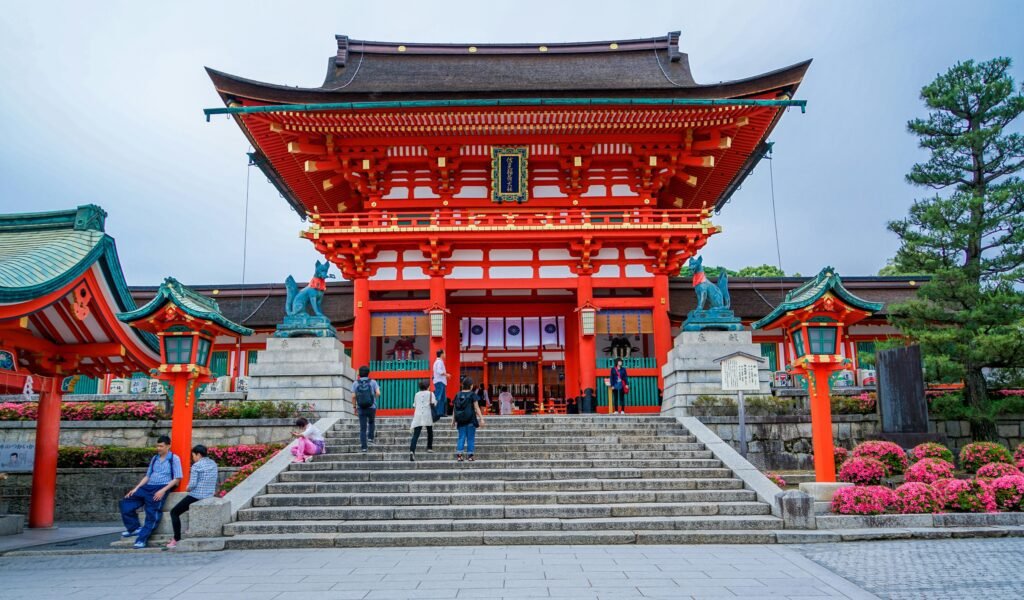
The Great Wall of China: China’s Great Wall needs little introduction, yet nothing prepares you for the moment the ramparts crest a ridge and run like a stone ribbon into blue mountains. For UK visitors, it’s a once‑in‑a‑lifetime sight that sits surprisingly close to Beijing and pairs brilliantly with China’s modern capital. This guide goes beyond the postcard to help families, couples, and solo travellers plan a smart, memorable visit, then links the experience back to inspiring trips at home in the UK.
The Great Wall of China: A Brief History: From Earthworks to Empire Icon
The Great Wall isn’t a single continuous barrier but a network of fortifications built, rebuilt, and extended over two millennia. Early frontier ramps and beacon towers date back to warring states before unification under Qin (3rd century BCE). Major campaigns under the Han pushed lines west towards the deserts, while the Ming dynasty (14th–17th centuries) replaced vulnerable rammed‑earth stretches with brick and stone, added imposing crenellations, and packed the skyline with watchtowers and passes.
Today’s most visited sections near Beijing – Badaling, Juyongguan, and Mutianyu are largely Ming‑era. Farther afield, you’ll find wilder, unreconstructed stretches cresting knife‑edged ridgelines, and even desert walls and beacon towers in Gansu and Inner Mongolia. The Wall’s cultural significance is vast: it’s shorthand for China’s ingenuity and endurance and a UNESCO World Heritage Site renowned for its landscapes as much as its history.
Quick Facts
- What it is: A system of walls, passes, beacon towers, and garrisons constructed over 2,000 years.
- Where to see it near Beijing: Badaling, Juyongguan, Mutianyu, Jiankou, Jinshanling, Gubeikou, Simatai, and lakeside Huanghuacheng.
- Why visit different sections: Each offers a distinct personality, from fully restored and family‑friendly to wild, photogenic ridge hikes.
- UNESCO status: Inscribed in 1987 for cultural and historical value.
The Great Wall of China: Which Section Suits You?
Choosing the right stretch is the most important decision you’ll make. Here’s how the main options compare for different travellers.
Badaling — Most Accessible, Most Popular
Best for: First‑time visitors who want convenience and barrier‑free paths.
The classic crowd‑pleaser: wide, restored ramparts; cable car; handrails; and clear signage. It’s the easiest place to experience the Wall if mobility is a concern or you’re travelling with young children or grandparents. Expect tour buses and peak‑time crowds.
Pros: Excellent access; barrier‑free route segments; on‑site facilities.
Consider: Arrive early or late in the day; avoid public holiday peaks.
Mutianyu — Family‑Friendly and Photogenic
Best for: Families and couples seeking big views without Badaling’s crowds.
Set amid forested hills, Mutianyu is beautifully restored and offers a cable car up and a fun chairlift/toboggan combo (children love this, height/age rules apply). The ridge‑top views are superb, and facilities in nearby Mutianyu Village make it easy to linger for lunch.
Pros: Gorgeous scenery; good facilities; flexible up/down options; gentler gradients.
Consider: Still busy in peak season; buy tickets ahead when possible.
Jinshanling — Best Day Hike
Best for: Hikers, photographers, and anyone seeking the Ming Wall’s drama with manageable logistics.
Jinshanling blends restored battlements with “tactically” rougher stretches. Think crenellations, photogenic watchtowers, and long sightlines. It’s a favourite for sunrise/sunset trips and for point‑to‑point hikes to neighbouring Gubeikou (when open and permitted).
Pros: Big‑landscape panoramas; fewer crowds than city‑adjacent sites.
Consider: Some steep pitches and uneven steps; bring proper footwear.
Gubeikou — Atmospheric and Unrestored
Best for: Experienced hikers and history fans who want raw texture and fewer people.
This section retains its weathered bones, tumbled stone, crumbling parapets, and open ridges. Part routes may close for conservation or safety; where access is limited, guided alternatives use valley trails that link up with selected towers.
Pros: Wild feel; moving sense of time’s passage.
Consider: No cable cars; surfaces are rough; check current access rules.
Jiankou — Wild Ridges for Adventurous Hikers
Best for: Expert hikers with a guide.
Jiankou is famed for rugged beauty; the “Sky Stair” and “Eagle Flies Facing Up” ridges are poster‑worthy, but it’s steep, exposed, and often officially off‑limits where safety or conservation dictates. Local guide support and awareness of current regulations are essential.
Pros: Jaw‑drop ridgelines; iconic photos.
Consider: Scrambly terrain; variable access; not for children.
Simatai — Night Walks & Water‑Town Charm
Best for: Couples and photographers looking for a distinctive experience.
Simatai is the only section near Beijing that regularly offers nighttime visits on selected towers, a magical way to see beacons lit and silhouettes against the stars. At the foot, Gubei Water Town provides hotels, restaurants, and a lantern‑lit canal network perfect for an overnight stay.
Pros: Night access (selected towers); easy overnighting in Gubei Water Town.
Consider: Night routes are limited; book slots ahead.
Huanghuacheng — Lakeside Beauty
Best for: Picnics, gentle walks, and unusual photos.
Part of the ramparts here meet a reservoir, creating mirror‑like reflections and a unique “water Great Wall”. Trails mix shore paths with short ascents to towers.
Pros: Unusual setting; relaxed vibe.
Consider: Less extensive ramparts; some sections involve steps and hillside paths.
Juyongguan — Historic Pass Close to the City
Best for: Short visits paired with city sightseeing.
A dramatic mountain pass with steep, restored walls forming a loop. It’s historically significant and close to Beijing, though gradients can be tough for little legs.
Practicalities: Tickets, Transport, Seasons & Safety
Getting There from Central Beijing
- Distance & time: The nearest sections (Badaling, Juyongguan, Mutianyu) sit 60–90km from central Beijing, roughly 1.5–2 hours by car depending on traffic. Jinshanling, Gubeikou, Simatai, and Huanghuacheng are a little farther.
- By public transport: Options evolve, but typically include buses from city hubs, dedicated tourist coaches, and trains serving Badaling/Juyongguan. For Jinshanling and Simatai, many visitors use pre‑booked shuttles or join small‑group tours that handle transfers.
- By taxi/ride‑hailing: Widely used for Mutianyu and Jinshanling. Confirm return arrangements or download an app with international payment enabled.
- Self‑drive: Straightforward motorways, clear signage, and ample parking at major sites. Factor tolls and peak‑time congestion.
Tickets & Entry
- Booking: Popular sections use dated tickets and entry windows in peak seasons and holidays. Book online where possible, carry your passport, and arrive a little before your slot.
- What’s included: Base tickets typically cover access to a defined stretch; extras may include cable cars, chairlifts, toboggans, shuttle buses, or night‑visit supplements (Simatai).
- Closures & capacity: Sections or towers may close for weather, conservation, or fire risk. Always check the official site or service accounts on the day.
Opening Times
Hours vary by season and section, with longer summer days and shorter winter windows; note special evening tickets at Simatai. The safest rule is to check the week you travel and avoid cutting it fine near the last entry.
Accessibility
- Easiest option: Badaling is the best bet for visitors with limited mobility, offering comparatively even surfacing, barrier‑free segments, and cable car support.
- Other sections: Mutianyu has smoother stretches and handrails but includes steep runs. Juyongguan’s loop is steep; Jinshanling has mixed terrain and steps.
- Strollers: Manageable at entrances and plazas; trickier on the wall itself. Consider a baby carrier for infants and toddlers.
Family‑Friendly Tips
- Start early to maximise cool temperatures and elbow room.
- Pick Mutianyu for the toboggan descent (check age/height rules) and plentiful lunch options.
- Build in snack and water breaks; sun hats and layers are essential.
- Avoid the steepest towers with very young children and set a clear turnaround time.
Safety & Etiquette
- Footwear & fitness: Expect stairs – some very steep. Grippy trainers or lightweight hikers are ideal.
- Weather: Summer heat and thunderstorms, winter ice and wind. Pack layers, sunscreen, and plenty of water year‑round.
- Drones & souvenirs: Flying is tightly restricted, and removing bricks, plants, or tiles is illegal. Leave only footprints, take only photos.
- Respect closures: If a tower or path is roped off, there’s a reason: erosion, wildlife, or safety.
Best Time to Visit
- Spring (Apr–May): Fresh green hillsides and blossoms. Mornings are crisp; afternoons can be hazy.
- Autumn (Sept–Oct): The photographers’ favourite – clear air, golden light, and flaming red leaves.
- Summer (Jun–Aug): Lush scenery but hot and humid; thunderstorms possible. Start early.
- Winter (Nov–Mar): Sparkling skies and occasional snow; dress for sub‑zero windchill.
- Avoid: China’s “Golden Week” (early October), May Day (early May), and Lunar New Year periods if you dislike crowds.
What to See & Do at Each Section
Signature Experiences
- Cable car or chairlift up, toboggan down (Mutianyu): A family favourite that saves little legs for the ramparts.
- Sunrise at Jinshanling: For early risers, the soft light across serrated ridges is extraordinary.
- Night walk at Simatai: A rare chance to experience the Wall under lanterns and stars.
- Lakeside stroll at Huanghuacheng: Boardwalks and shoreline paths frame beautiful reflections.
- Historic pass at Juyongguan: Climb the loop and read the story in the stone.
Pairings Near Beijing
- Summer Palace: Lakes, pavilions, and hilltop views – an elegant counterpoint to the Wall’s military purpose.
- 798 Art District: Contemporary galleries and cafés in converted factories, good post‑Wall wind‑down for couples and friends.
- Hutongs of old Beijing: Rickshaw tours and walking routes through narrow lanes – fun for families and solo explorers alike.
Suggested Itineraries
1) Classic One‑Day Great Wall & City Highlights (Families/Couples)
07:00 Depart from central Beijing.
08:30 Arrive Mutianyu; cable car up, explore 2–3 towers each way.
11:00 Chairlift/toboggan down (or cable car) and lunch in Mutianyu Village – choose from noodle houses to courtyard cafés.
12:45 Drive to the Summer Palace (1.5 hours). Wander lakeside paths and climb to the Tower of Buddhist Incense for sweeping views.
16:30 Return to the city. Freshen up.
18:30 Dinner in Dongcheng or Gulou – from classic Beijing duck to modern bistros.
20:30 Optional: Evening stroll around Houhai lakes or a craft‑beer bar in NLGX.
Why it works: Mutianyu’s facilities and flexible up/down routes suit mixed‑age groups. The Summer Palace offers shade, boats, and gardens – perfect after morning steps.
2) Two‑Day Hike & Night‑Wall (Adventurous Couples/Solo Travellers)
Day 1 – Jinshanling Panorama
06:30 Depart Beijing.
09:00–14:00 Hike Jinshanling’s ridge (allow 4–5 hours at a steady pace with photo stops). Pack snacks; facilities are spaced out.
14:30 Transfer to Gubei Water Town (near Simatai). Check into a boutique inn or hotel.
17:30 Early dinner by the canal.
19:00–21:00 Simatai night‑walk on designated towers (pre‑booked). Lantern‑lit paths and mountain silhouettes make this unforgettable.
Day 2 – Slow Morning & Back to Beijing
08:00 Coffee and a canal stroll; optional hill cableway for a town viewpoint.
10:30 Drive back towards Beijing, with a lunch stop en route.
14:30–16:00 Optional detour to Huanghuacheng for a lakeside walk before returning to the city.
Why it works: You’ll experience restored drama at Jinshanling, a rare night wall at Simatai, and a softer, lakeside finale.
3) Three‑Day Wall & Imperial Detour (Families & History Lovers)
Day 1 – Mutianyu with Time to Linger
Start as per the one‑day plan, but slow it down: pick a child‑friendly café for lunch and let the afternoon drift with ice creams and gentle village walks.
Day 2 – Juyongguan Pass & Old Beijing
Climb the loop at Juyongguan in the cool morning. Return to the city for hutong explorations – tea tasting, paper‑cutting workshops, or a family dumpling class.
Day 3 – Summer Palace & Optional Temple of Heaven
Add boats and gardens at the Summer Palace, then finish with kites and open lawns at the Temple of Heaven park.
Why it works: A slower rhythm keeps little travellers happy while delivering three distinct flavours of the capital region.
Travel times (indicative): Beijing–Mutianyu 1.5–2 hrs; Beijing–Jinshanling/Simatai 2–3 hrs; Mutianyu–Huanghuacheng 45–60 mins; Jinshanling–Gubei Water Town 45 mins.
Where to Eat & Stay
Dining Near the Wall
- Mutianyu Village: Courtyard cafés, noodle shops, dumpling houses, and simple Western menus. Great for families who want options and snacks on hand.
- Gubei Water Town (Simatai): Riverside restaurants for hot‑pot, grilled skewers, and northern Chinese classics – ideal for a cosy post‑hike dinner.
- Jinshanling area: Simpler eateries near the gates; plan snacks and a proper meal before/after your hike.
- Huanghuacheng: Picnic‑friendly; bring supplies or aim for rustic spots along the lakeshore.
Staying by the Wall
- Boutique stays (Mutianyu): Stylish courtyard inns and design‑led lodges make this a charming overnight for couples. Look for heated floors in winter, terraces for morning coffee, and on-site restaurants.
- Gubei Water Town hotels (Simatai): A range from characterful inns to international‑brand hotels. Ideal for the night‑walk plus spa time the next morning.
- Rural guesthouses (Jinshanling/Gubeikou): Simple, friendly places run by local families – good value and great for sunrise positioning.
- Back in Beijing: If you’d rather keep logistics simple, base yourself in Dongcheng (for hutongs and heritage), Gulou (for cafés and bars), or Sanlitun/Chaoyang (for international dining and shopping). Families appreciate larger rooms and pools.
Booking tips: Weekends and school holidays fill fast near Beijing. Reserve ahead for Simatai’s night tickets and Gubei Water Town stays.
Photography & Filming: Getting the Shot
- Golden hours: Sunrise at Jinshanling and sunset at Mutianyu deliver warm sidelight and long shadows. Winter’s low sun can be magical after a dusting of snow.
- Compositions: Use watchtowers as anchors, look for repeating stairs, and try a telephoto lens to compress ridges.
- Crowd management: Arrive for opening, walk 2–3 towers beyond the first viewpoint, and shoot back towards the gate to frame empty foregrounds.
- Weather: Haze is common. A polariser helps; post‑shower clarity can be astonishing.
- Drones: Airspace and heritage rules are strict; assume no‑fly unless you have explicit permission.
Practical China Tips for UK Travellers
- Visas & entry: Requirements change; check the latest UK–China guidance, allow time for applications where needed, and carry your passport for all ticket checks.
- Payments: Mobile payments dominate; bank cards are increasingly accepted in tourist areas. Carry some cash for rural kiosks.
- Connectivity: Buy an eSIM or local SIM for maps and translation apps. Download offline maps as a backup.
- Language: Key phrases go a long way; signage at major sections is bilingual. A translation app is helpful in smaller eateries.
- Health & safety: Tap water isn’t for drinking; buy bottled and keep hydrated. In summer, plan shaded breaks; in winter, protect hands and ears.
- Respect: Stick to marked routes; don’t carve names or move stones. Help keep fragile sections intact for future visitors.
Seasonal Events & Special Experiences
- Great Wall night visit (Simatai): Pre‑booked evening entry to selected towers – romantic and atmospheric.
- Wall marathons & hikes: Annual running events (often at Huangyaguan and other sites) challenge athletes on flights of steps and ridge trails, dates vary year to year.
- Mid‑Autumn & Lantern displays: Expect festive lanterns in Gubei Water Town around major holidays – busy, colourful, and great for photos.
- Winter serenity: Crisp air, fewer visitors, and the chance of snow; some facilities reduce hours, so double‑check.
Broader UK Tie‑ins: From the Great Wall to Hadrian’s Wall
A day on the Great Wall sharpens your appetite for frontier history back home. Here’s how to keep the theme alive across the UK:
Hadrian’s Wall Path, England
Eighty‑four miles of Roman frontier with fort sites, milecastles, and rolling moorland views. Pick a day‑walk between Housesteads and Steel Rigg for classic scenery, or base yourself in Hexham or Carlisle for a long weekend. Museums at Vindolanda and the Roman Army Museum bring the frontier to life for families.
The Antonine Wall, Scotland
Shorter‑lived than Hadrian’s Wall but a UNESCO‑listed frontier running across central Scotland. Walk sections near Falkirk or Bearsden, pair with the Kelpies and Falkirk Wheel, and add Glasgow museums for a full cultural day.
Offa’s Dyke Path, England & Wales
An earthwork frontier on a grand scale. Tackle a scenic bite near Hay‑on‑Wye or Clwydian Range for ridge‑top views and castles. It’s ideal for couples and solo hikers seeking multi‑day trails with cosy market‑town stops.
Coastal Forts & Castles
For more masonry and sea views, pivot to Dover Castle, Tintagel, Caernarfon, or Dunstanburgh – each offering cliff‑top drama and family‑friendly storytelling.
These UK options echo the frontier theme, military architecture adapted to landscapes, while remaining accessible and rich in heritage experiences.
Responsible Travel on the Wall
Conservation is everyone’s job. Stick to official paths, avoid scrambling on unrestored parapets, and pack out all litter. Buying from local, licensed vendors supports communities that steward the landscape. If you choose a guided trip, favour operators who cap group sizes, respect closures, and contribute to conservation initiatives.
Final Thoughts
Whether you’re wrangling a buggy and snacks, plotting a proposal at sunset, or chasing a perfect ridge‑line shot, the Great Wall delivers moments you’ll remember forever. Choose a section that matches your energy, plan for the season, and build in time to simply look. On a clear day, when grey stone meets green hills and the skyline folds into blue, you’ll understand why people travel half the world to walk these steps and why you’ll want to keep exploring walls and frontiers back home.


